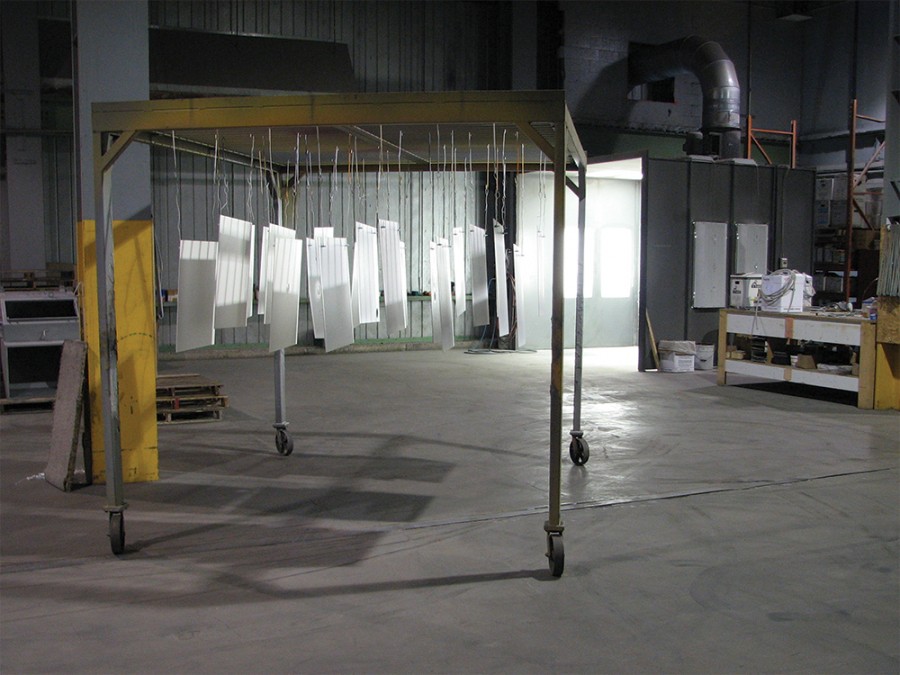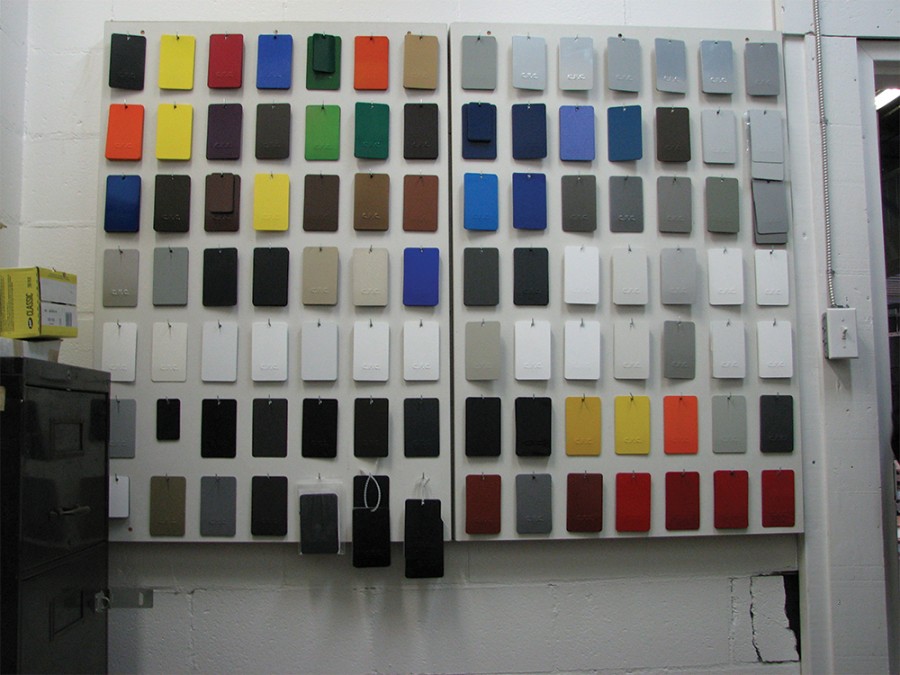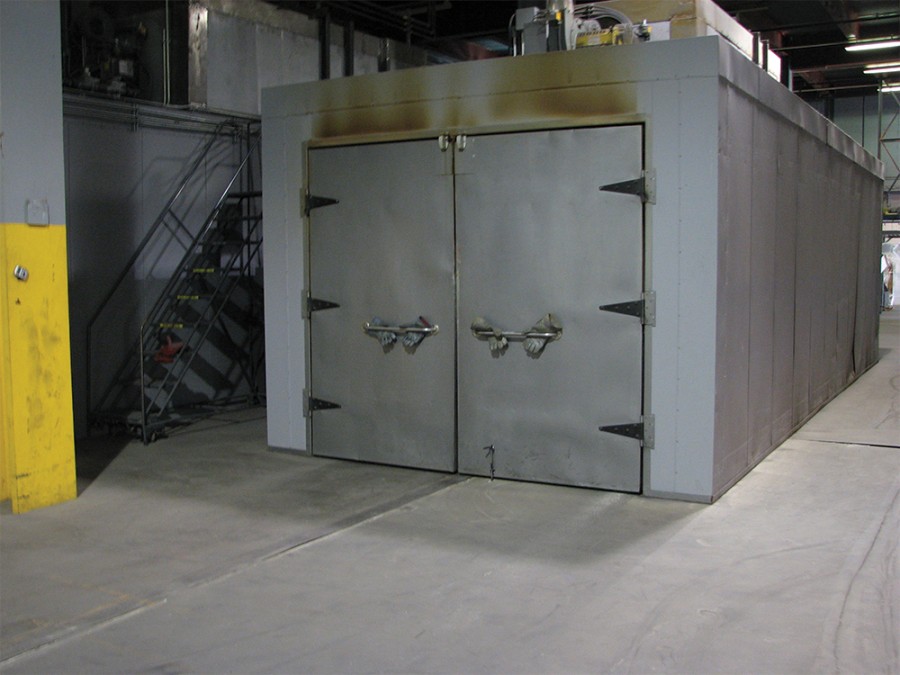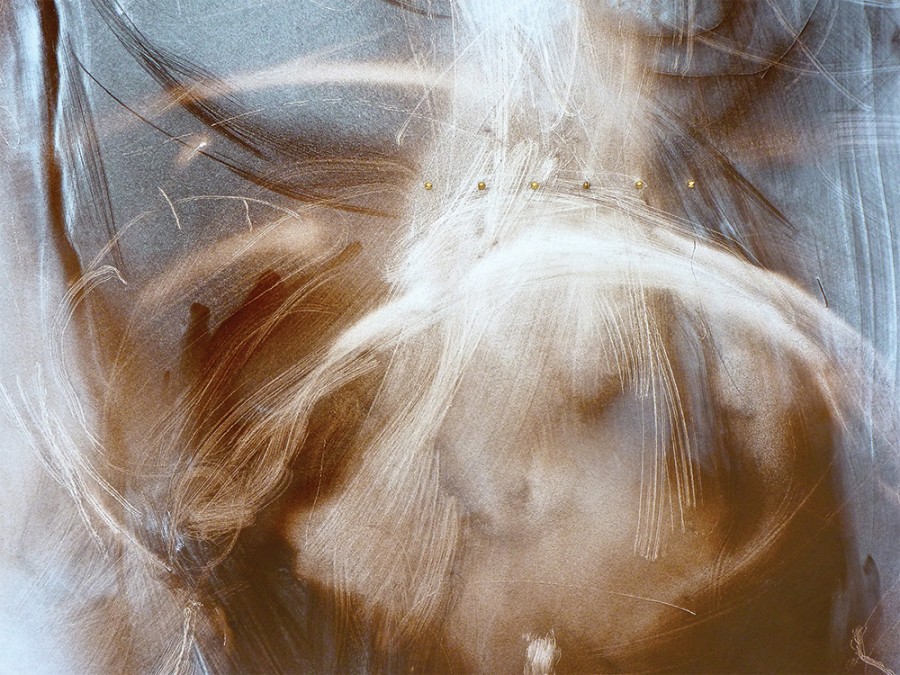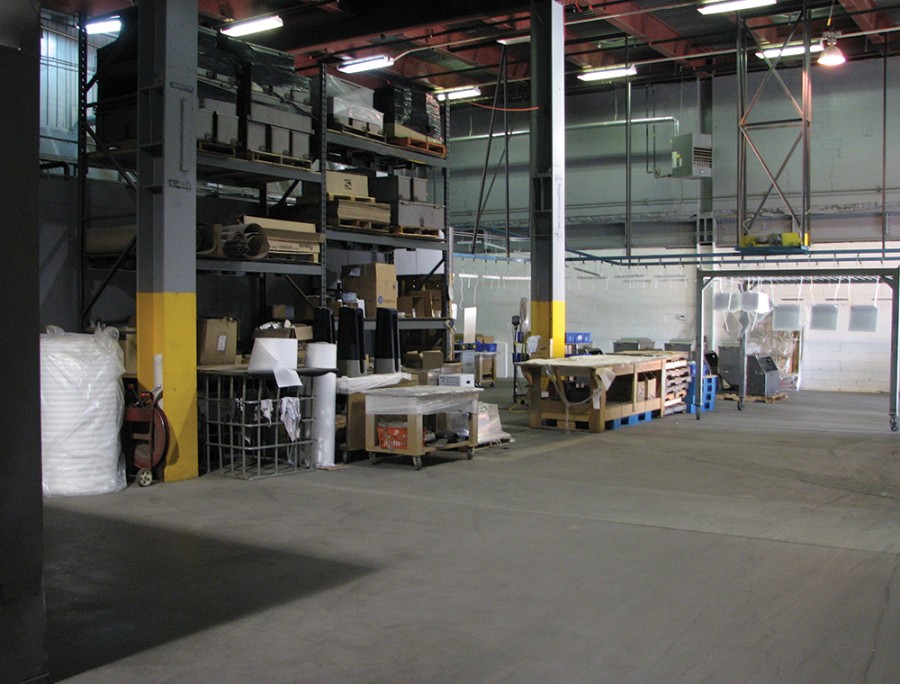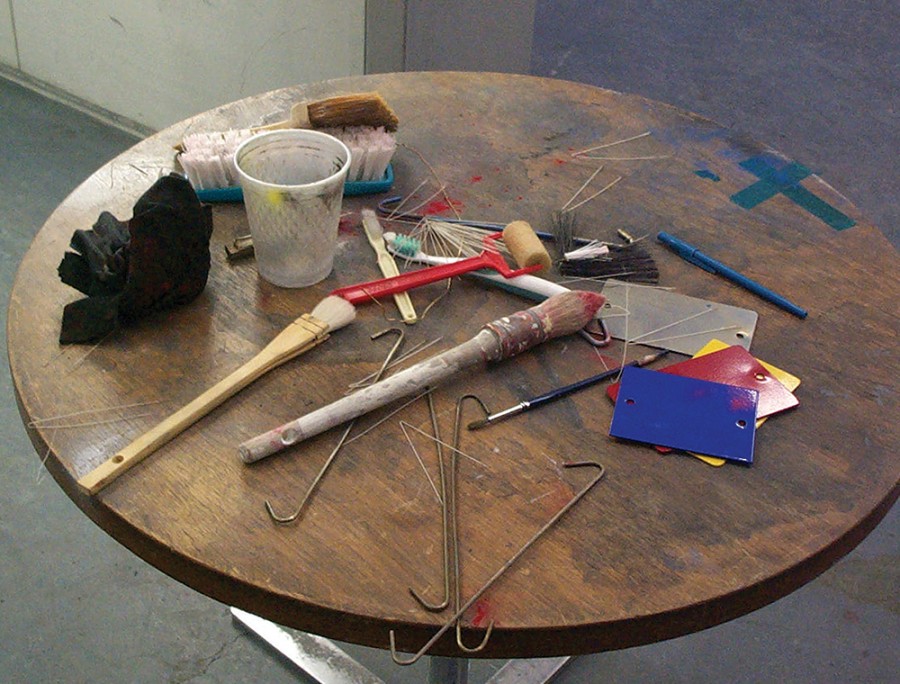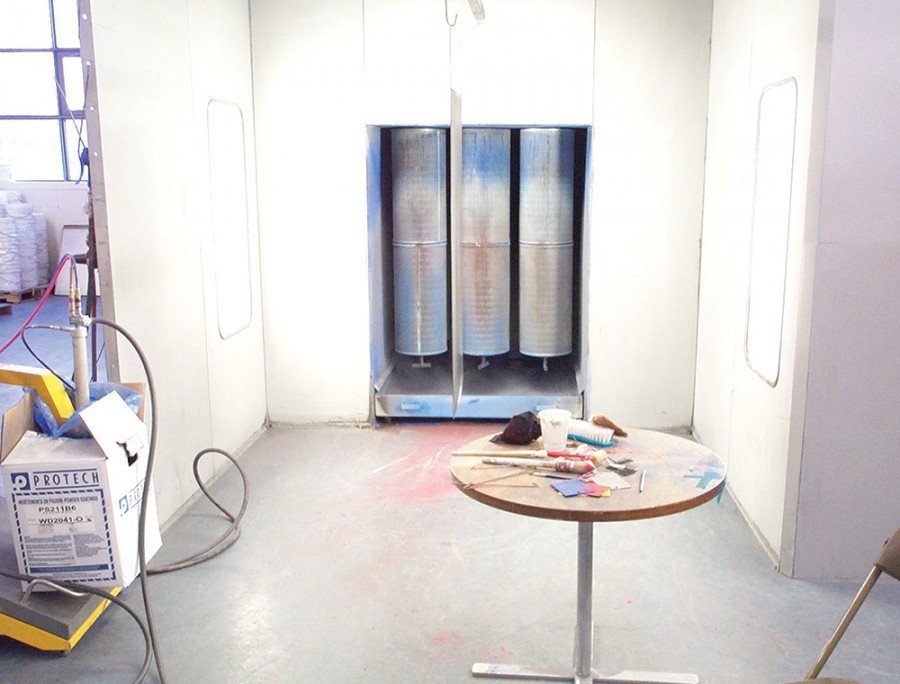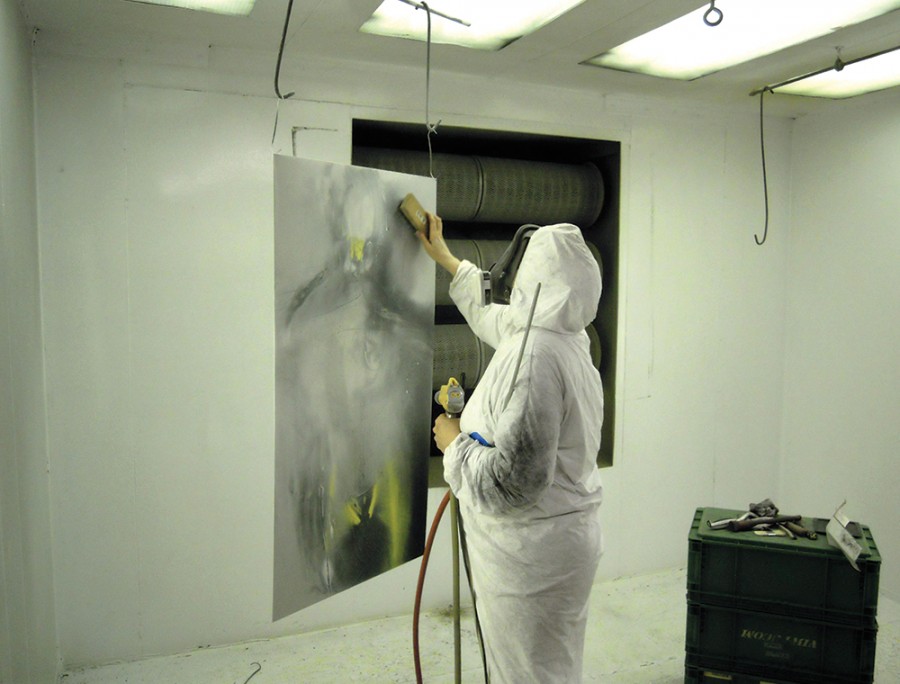Process
Darcia Labrosse paints using electrostatic paint, also known as powder-coating, an industrial medium used for colour finishing and protecting architectural siding. This medium was chosen for its constraints, its endless possibilities once coupled with the intent of producing a finer art, and for its pigment vibrancy and robustness.
Rivets, bolts, studs, spikes, gold-plated screws and other surgical stainless steel piercings are applied afterwards, paradoxically exposing the immutability
of the metal and acting as a metaphore for life-like stitches, scars and marks to the painted bodies.
Here, the painting studio has been deterritorialized per se; all paintings are executed in a factory setting. The work can be done in any powder-coating paint factory in the world. Creation happens in a paint booth of approximately 100 square feet, under neon lights, in a loud and dusty environment. There are no sketches displayed, just an immediate immersion in the struggle of gestural painting. Utilizing metal and/or plastic brushes in one hand and a spray and an airgun in the other, the painter applies, or substract, the pigments onto the metal surface.
Though electrostatic paint is an ecological improvement from industrial liquid paint, it still remains a toxic environment. The painter is covered from head to toe, seeing through a visor and breathing from a respirator.
The pigments used in these paintings are applied to sheets of untreated or anodized aluminum (0.5 mm), copper or corten steel hung vertically on a rack connected to an electrical charge. The primal bounding agent for the pigment is electricity. Ultimately, the stabilizing agent is provided by heat.
The pigments are an assemblage of three or four different resins (polyester, epoxy, urethane, acrylic and sometimes a mix of epoxy-polyester). They are a super-fine powder, resembling talc, which become positively charged electrically as they are shot through a spray gun onto a negatively charged metal sheet. Colours cannot be mixed to make other colours, but can be added and baked, one on top of another to produce varying hues. Mat and glossy varnishes can also be used for visual effect. A final firing in an oversized, high-temperature oven cures the pigments on the metal surface, very much like an enamel finish.
